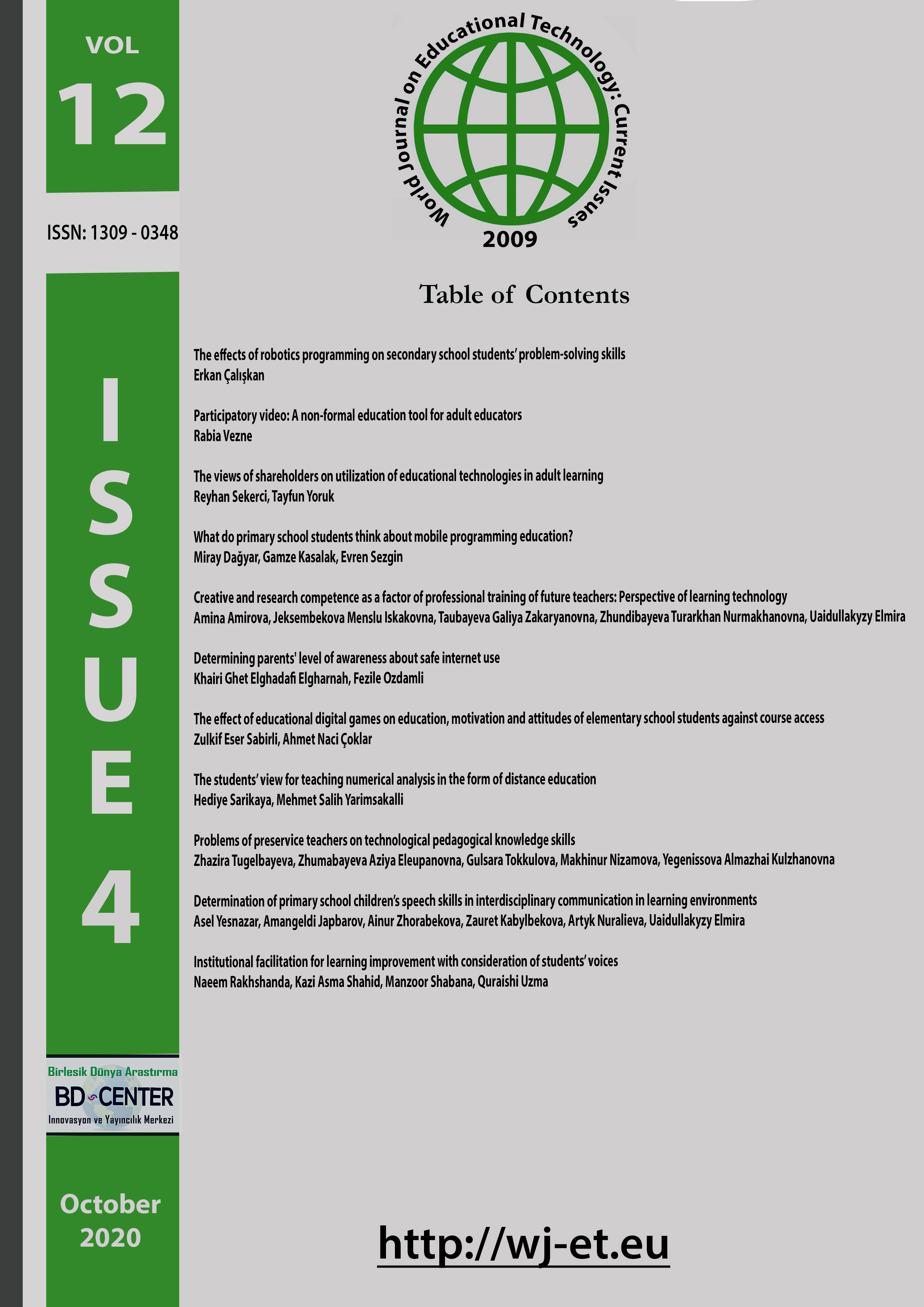What do primary school students think about mobile programming education? " ˜Developing my own mobile game"
Main Article Content
Abstract
The purpose of this study is to reveal the views of fourth-grade primary school students about mobile programming education. Data were collected by using interviews, metaphor and student drawings under the qualitative research method. Amongst the 135 students who participated in the mobile programming education, 24 fourth-grade primary school students, who were selected via the purposeful sampling method, took part in the study. Content analysis was used to analyse the data collected through the semi-structured interview form. The drawings of the students which reflected what the mobile programming education meant for them were evaluated through document analysis. As a result, it can be said that mobile programming education contributes positively to students' mobile programming, scientific and creative thinking skills and social skills. It is recommended to use MIT App Inventor in programming education for primary school students.
Keywords: Mobile programming; mobile programming education; MIT app inventor; information technology; primary school students.
Downloads
Article Details

This work is licensed under a Creative Commons Attribution 4.0 International License.
World Journal on Educational Technology: Current Issues is an Open Access Journal. The copyright holder is the author/s. Licensee Birlesik Dunya Yenilik Arastirma ve Yayincilik Merkezi, North Nicosia, Cyprus. All articles can be downloaded free of charge. Articles published in the Journal are Open-Access articles distributed under CC-BY license [Attribution 4.0 International (CC BY 4.0)].
Birlesik Dunya Yenilik Arastirma ve Yayincilik Merkezi (BD-Center)is a gold open-access publisher. At the point of publication, all articles from our portfolio of journals are immediately and permanently accessible online free of charge. BD-Center articles are published under the CC-BY license [Attribution 4.0 International (CC BY 4.0)], which permits unrestricted use, distribution, and reproduction in any medium, provided the original authors and the source are credited.
